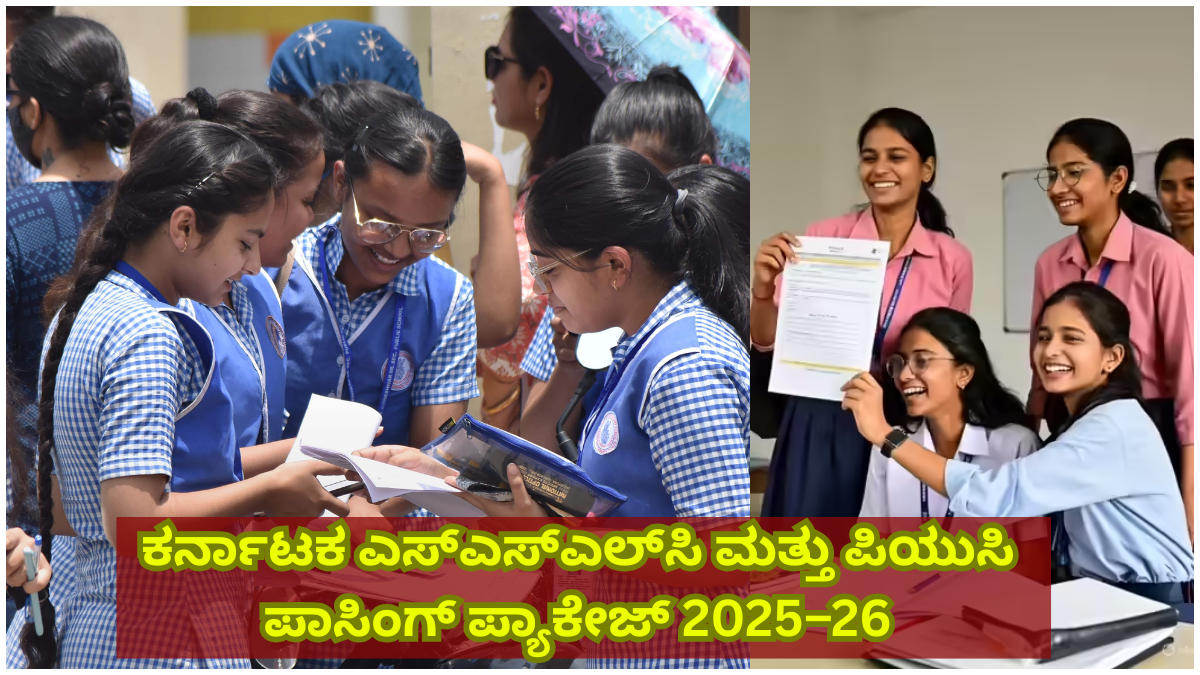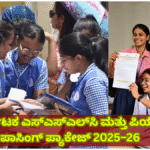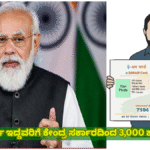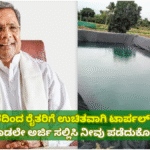Introduction
Education in Karnataka stands on two crucial foundations — SSLC (Secondary School Leaving Certificate) and PUC (Pre-University Course). These two stages define a student’s academic journey and future career choices. The SSLC marks the completion of schooling (Class 10), while the PUC represents the bridge to higher education (Classes 11–12). Together, they form the foundation for college admissions, government exams, and professional studies.
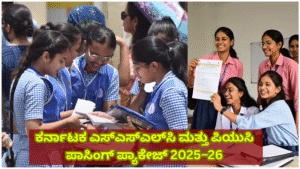
As the 2025–26 academic year approaches, the Karnataka education system is undergoing key reforms. The pass mark criteria for both SSLC and PUC are changing, internal assessments are gaining more weight, and the “passing package” — a set of essential notes, question banks, and exam strategies — has become an indispensable tool for students.
This article offers a full overview of the 2025–26 SSLC and PUC structure, including the syllabus, exam pattern, passing criteria, the role of passing packages, and expert study tips to help students not just pass, but perform with confidence.
Part 1: Understanding the SSLC Examination (Class 10)
Importance of SSLC
The SSLC examination is conducted by the Karnataka School Examination and Assessment Board (KSEAB). It is one of the most significant milestones in a student’s academic life. A good SSLC score opens doors to higher secondary education, diploma courses, and scholarships, while a pass certificate is essential for entry into any formal academic or professional stream.
In 2025–26, the SSLC exam continues to be a blend of academic testing and skill-based evaluation, emphasizing understanding over rote memorization.
SSLC Syllabus 2025–26 Overview
The syllabus is designed to balance conceptual learning with practical application. It includes three language papers and three core subjects, along with internal activities and assessments.
Core Subjects
- Mathematics – Real Numbers, Polynomials, Pair of Linear Equations, Quadratic Equations, Geometry, Trigonometry, Probability, and Statistics.
- Science – Life Processes, Light, Electricity, Acids & Bases, Metals and Non-Metals, Our Environment, and Human Eye & Colorful World.
- Social Science – History, Geography, Political Science, and Economics, focusing on India’s development, global interconnections, and civic awareness.
Languages
Students study three languages:
- First Language: Kannada, Tamil, Telugu, or Urdu (as per regional preference)
- Second Language: English or Kannada
- Third Language: Hindi, Sanskrit, or another Indian language
Each language paper includes prose, poetry, grammar, comprehension, and creative writing.
SSLC Exam Pattern 2025–26
The KSEAB has retained the general exam pattern but introduced small modifications in assessment. The exam papers are structured as follows:
- Written Exam (Theory): 80 marks
- Internal Assessment / Project Work: 20 marks
- Total: 100 marks per subject
The First Language paper carries 100 marks exclusively through the written exam, while other subjects follow the 80+20 structure.
Questions range from multiple choice, short answer, and long descriptive types, focusing on both knowledge and analytical skills. The inclusion of internal marks encourages continuous learning through school-based activities like projects, experiments, and tests.
The New Pass Mark Rules (2025–26)
One of the biggest updates for the 2025–26 academic year is the revision of pass marks. Under the new rule:
- Students must score a minimum of 30% marks in each subject, including internal and theory components.
- The overall aggregate pass percentage has been reduced from 35% to 33%.
- Out of a total of 625 marks, students need 206 marks or more to pass.
- Internal marks will now play a decisive role in determining final results.
This change aligns Karnataka with national boards such as CBSE and aims to reduce failure rates while encouraging consistent performance throughout the year.
What Is a “Passing Package”?
The term “Passing Package” refers to a specialized set of learning materials designed to help students cross the pass mark comfortably. These packages are usually prepared by experienced teachers, district education offices, or coaching centres and are available both in Kannada and English mediums.
A passing package typically includes:
- Chapter-wise important questions
- Expected 5-mark and 10-mark questions
- Topic weightage charts
- Formula sheets and key definitions
- Previous years’ question analysis
- Sample question papers
- Simplified notes and summaries
Such resources are extremely helpful for slow learners, repeaters, and students short on preparation time, ensuring they can focus on essential topics rather than attempting to study the entire syllabus at once.
SCROLL DOWN FOR PUC PASSING PACKAGE…!
However, educators emphasize that these tools should supplement, not replace, full syllabus learning — especially for students aspiring for distinction marks.
Internal Assessment & Mid-Term Exams
From 2025–26 onward, internal evaluation has become a permanent feature of the SSLC grading system. Internal assessments contribute up to 20 marks per subject and include:
- Periodic tests
- Homework and class participation
- Practical experiments (in Science)
- Project submissions
- Attendance and discipline
The SSLC mid-term exam will take place in September 2025, conducted uniformly across all government, aided, and private schools. These internal scores will directly influence final results, making them as important as the board exam itself.
Part 2: Pre-University Course (PUC – Class 11 & 12)
Significance of PUC
The Pre-University Course (PUC) represents the next stage after SSLC. Administered by the Department of Pre-University Education (DPUE), this two-year program prepares students for university education and professional entrance exams like NEET, CET, or JEE.
There are three major streams:
- Science: Physics, Chemistry, Mathematics, Biology/Computer Science
- Commerce: Accountancy, Business Studies, Economics, Statistics
- Arts/Humanities: History, Sociology, Political Science, Psychology, etc.
PUC is not only about academics — it shapes critical thinking, research habits, and personality development.
PUC Exam & Evaluation Pattern (2025–26)
Like the SSLC, the PUC system also follows an 80-20 structure:
- Theory / Written Exam: 80 marks
- Internal / Practical Evaluation: 20 marks
Subjects involving practicals (like Physics, Chemistry, Biology) include separate practical exams worth 30 marks, with theory carrying 70 marks. Students must pass both components to be declared successful.
Revised Pass Mark Rules for PUC (2025–26)
The Karnataka government has implemented new passing criteria starting from the 2025–26 academic year:
- Students must score at least 30% marks in each subject, including theory and internal assessment.
- They must achieve 33% aggregate across all subjects combined.
- Students failing one or more subjects can appear for supplementary exams conducted shortly after results.
These changes aim to reduce stress and increase the success rate while ensuring that every student maintains basic competency in all subjects.
The Role of “Passing Packages” for PUC Students
PUC exams are conceptually deeper than SSLC, but passing packages remain extremely useful — particularly for last-minute revision. The packages generally contain:
- Chapter summaries and quick-reference notes
- Important definitions, derivations, and formulas
- Expected question papers and blueprints
- 5-mark, 10-mark, and one-word question banks
- Time management and presentation strategies
Teachers often provide official “model question papers” reflecting the new pattern, helping students get accustomed to the expected difficulty level.
Part 3: Comparison of SSLC and PUC Evaluation Reforms
| Aspect | SSLC 2025–26 | PUC 2025–26 |
|---|---|---|
| Minimum subject marks | 30% | 30% |
| Aggregate pass mark | 33% | 33% |
| Internal assessment weightage | 20 marks | 20 marks (varies with practicals) |
| Mid-term inclusion | Yes | Yes |
| Supplementary exam system | Available | Available |
| Authority | KSEAB | DPUE |
| Objective | Reduce failure rate, promote continuous learning | Support holistic evaluation and fair grading |
Both reforms emphasize inclusivity, continuous evaluation, and consistency across Karnataka’s educational structure.
Benefits of the New System
- Reduced academic stress – Lower pass marks mean fewer students fail due to minor shortfalls.
- Encouragement for continuous learning – Internal marks motivate students to perform throughout the year.
- Alignment with national boards – The 33% pass criterion is in line with CBSE and ICSE standards.
- Improved fairness – Balanced subject-wise and overall criteria ensure holistic evaluation.
- Support for weaker students – Passing packages and internal evaluation give struggling students a fair chance.
Potential Challenges
- Variation in internal assessment quality
Internal marks can vary widely across schools, potentially leading to inconsistent grading. - Risk of reduced academic rigor
Some educators fear that lowering pass marks may make students complacent. - Resource disparities
Rural schools with limited staff or lab facilities may find it difficult to implement continuous assessments effectively. - Need for teacher training
Teachers will need clear guidelines on evaluation methods and internal mark allocation. - Student motivation
Students must be encouraged to aim beyond passing, focusing on conceptual understanding and long-term learning.
How to Prepare Effectively (Passing + Scoring)
For SSLC Students
- Attend all internal tests – Every mark counts.
- Create a study plan dividing each subject weekly.
- Focus on high-weightage chapters like Trigonometry, Electricity, and History.
- Use passing packages to identify repeated question patterns.
- Practice model papers under exam conditions.
- Strengthen weak subjects early in the year.
For PUC Students
- Understand the new marks system – know exactly how theory and practicals combine.
- Revise daily using short notes or flashcards.
- Group study to clarify concepts and share strategies.
- Attempt previous year papers to improve speed and accuracy.
- Take internal exams seriously – they form 20–30% of your final score.
- Balance theory and practical preparation to meet both minimum requirements.
The Role of Teachers & Schools
Teachers are the backbone of the new system. Their role extends beyond classroom teaching to:
- Designing fair internal assessments
- Guiding students on time management
- Preparing subject-wise passing packages
- Conducting remedial sessions for weak learners
- Encouraging ethical academic practices
Schools, on the other hand, must ensure resources — laboratories, libraries, and digital content — are equally available to every student.
Looking Ahead: The Future of Karnataka Education
The shift in SSLC and PUC policies reflects a broader vision — making education student-centric, inclusive, and application-oriented. With the inclusion of internal marks, flexibility in evaluation, and the use of learning packages, Karnataka is moving toward a balanced model where both academic excellence and emotional well-being are valued.
If executed effectively, these reforms can:
- Decrease dropout rates
- Enhance learning outcomes
- Foster curiosity and analytical skills
- Bridge the gap between urban and rural education systems
The government, educators, and parents together must ensure that reforms don’t just help students pass but empower them to learn meaningfully.
Conclusion
The academic year 2025–26 marks a new era for Karnataka’s SSLC and PUC students. With the revised pass percentage, integrated internal assessments, and the growing use of passing packages, education in the state is becoming more inclusive and adaptive.
For students, the message is clear: success lies not merely in memorizing textbooks but in understanding concepts, participating actively, and making the best use of resources like passing packages and model papers. For teachers and schools, the goal is to guide and mentor students through this transition with fairness and motivation.
Ultimately, the new system’s success will depend on how well it balances accessibility with academic quality. If every stakeholder plays their part, Karnataka’s 2025–26 SSLC and PUC batches could set an example of how thoughtful reform can make education both attainable and aspirational.
